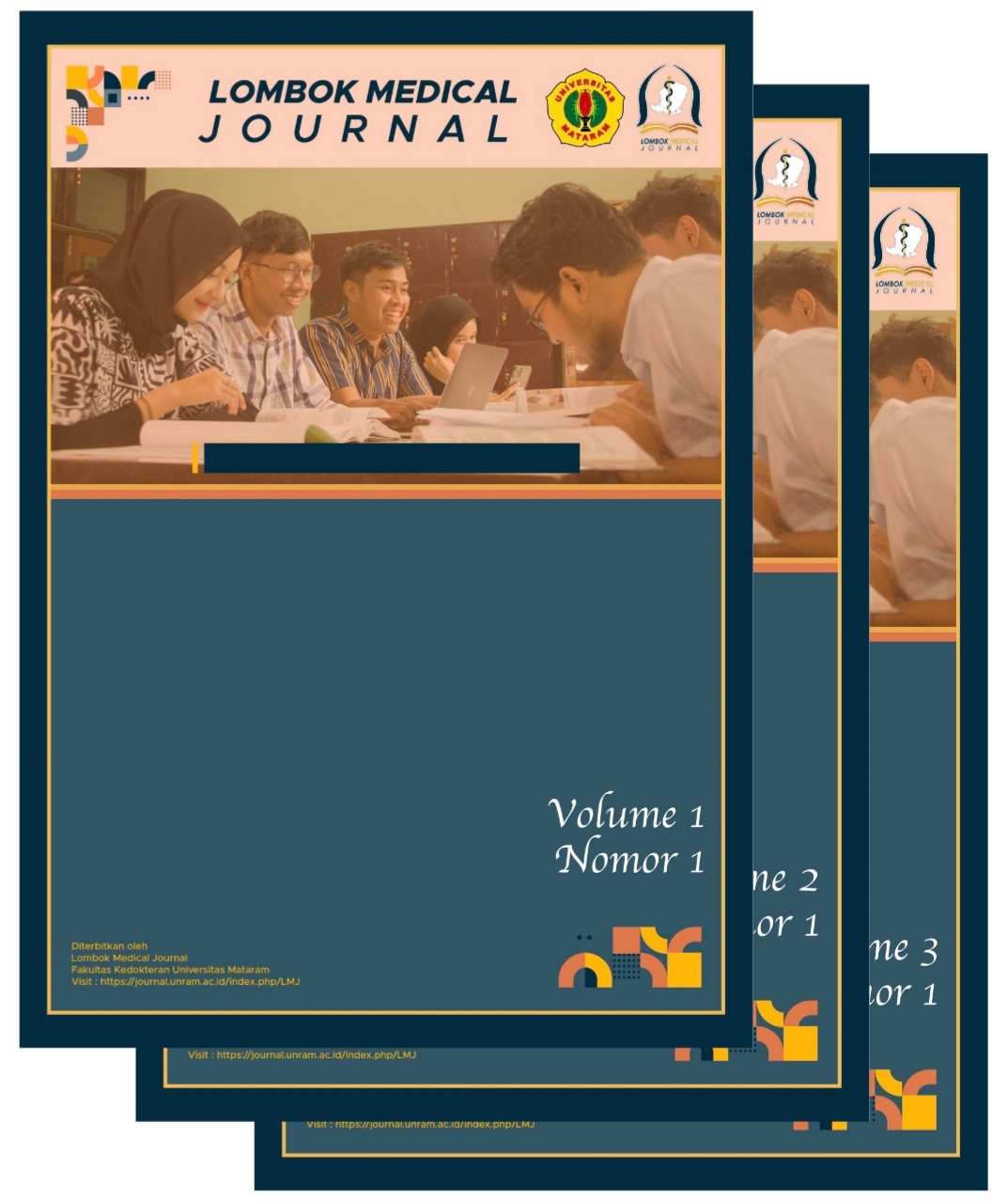Oral Cancer and Reconstruction: A Serial Case Report
DOI:
https://doi.org/10.29303/lmj.v4i3.7894Kata Kunci:
Head and neck cancer, head and neck reconstruction, oral cancerAbstrak
Introduction : The head and neck cancer are sixth most common cancers worldwide with cancer of oral cavity. The basic treatment modality for the carcinoma of oral cavity has been surgery and the large defects resulting from the ablation of the tumors require reconstruction. Reconstruction after wide excision of oral cancer challenge in itself, because it requires an appropriate method of reconstruction, in accordance with oncology rules and while maintaining the function . In this case serial, several methods of reconstruction from oral cancer are discussed.
Case Report : We report 3 cases of patients female aged 48-71 years with complaints of lumps on the tongue. Patients with risk factors poor oral hygiene. On physical examination, cervical lymph node enlargement was found at levels I-IV. All patients underwent a CT scan of the head and neck. On histopathological examination, squamous cell carcinoma was found, the stage of oral cancer in this case series was stage I-III. The surgery was performed with a combined mandibular and neck dissection operation (Commando) with LD flap, and SCM flap. The patient is then treated in the intensive care unit for 1-2 days, then treated in the usual room and discharged on the 5-7th day of treatment without complications
Discussion : Although there is increasing use of microvascular free flap in this era, however, conventional flap like LD and SCM still remains very reliable and versatile myocutaneous flap for primary as well as secondary reconstruction, In head and neck reconstruction, LD and SCM flap is used extensively due to its proven reliability and multipurpose nature . The main advantage of LD and SCM flap is that it can be used in a very wide range of defects in the head and neck region including the maxilla, neck as well as tempero-orbital area. Like the other myocutaneous flap, LD and SCM is harvested by single stage reconstructive procedure and does not require any flap delay or release. The morbidity of the donor site is surprisingly low, however, few patients may complain pain. It is also very useful in the patients with poor clinical conditions as well as for elderly patients. This flap can be used in the cases where there is inadequate recipient vessels for microanastomosis in the neck of the patients who underwent high dose radiotherapy or when there is contraindication to free flap such as medical conditions that make the patients unable to tolerate long surgical procedures or can be used as a salvage procedure after necrosis of free flap. wound dehiscence, infection, vascular rapture with marked increase in the morbidity. There is less mentioning of the incidence of recurrence at flap harvesting site however, few cases are reported in the literature.
Conclusion : Reconstruction of composite oro mandibular defects of oral malignancy is a challenging problem for oncology surgeons. LD and SCM myocutaneous flap was found to be a versatile flap for reconstruction of large defects in the head and neck region with minimal complication rate. In today’s world of micro vascular flaps, in spite of associated complications, loco regional flaps play a crucial role at oncology centers. LD and SCM offer a faster, easier and reliable option for reconstruction in post-ablative head and neck surgery.























